Last Updated on September 12, 2025 by teamobn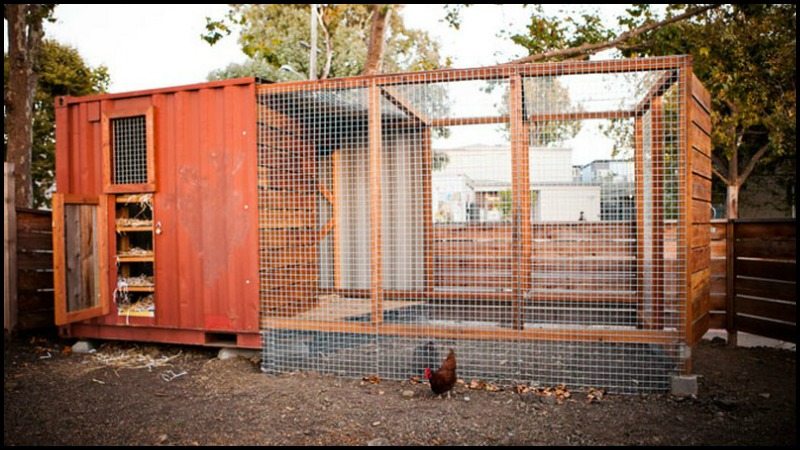
Would a shipping container fit as a chicken coop? If you ever think about producing fresh eggs for business, you’re definitely going to need an adequate and proper chicken coop for that. But what is a ‘proper’ chicken coop in the first place?
Of course, we also want something that is easy for us to clean. Now as long as these standards are met, your chicken coop can be anything you want it to be! Here’s one example – an old shipping container… To be exact, a shipping container chicken coop.
The container was split into two and its other half was made as a shipping container chicken coop. The coop, which includes a chicken run, was built with huge amounts of wire mesh and old redwood fencing they found on Craigslist. Today it houses 40 happy chickens!
This unique shipping container chicken coop was built by business partners, and authors of the above-mentioned book, Matthew Wolpe and Kevin McElroy. 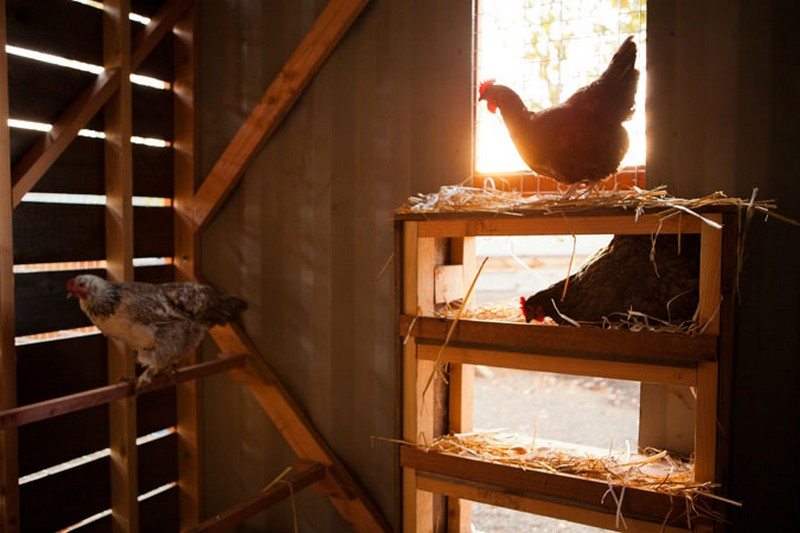
The project was done as a workshop under City Slicker Farms in West Oakland with volunteers from various socially responsible companies.
Take a quick tour by viewing our album below.
If you want to learn even more about the Container Coop and its builders, you can head over to Just Fine Design/Build.
Building a Shipping Container Chicken Coop
Shipping containers are made in factories and have been extensively used to ship goods across the world. They are most commonly rented or purchased by businesses to store their goods.
They are used by business owners of all sizes and are a great way to keep products safe and secure. The standard shipping container (with dimensions of 8 ft x 8 ft x 9 ft) is a great starting point for a chicken coop.
But, you can customize your shipping container chicken coop with a few ideas. First, you can build the chicken coop over this container, or you can use the container as a base and build a raised wooden structure around it.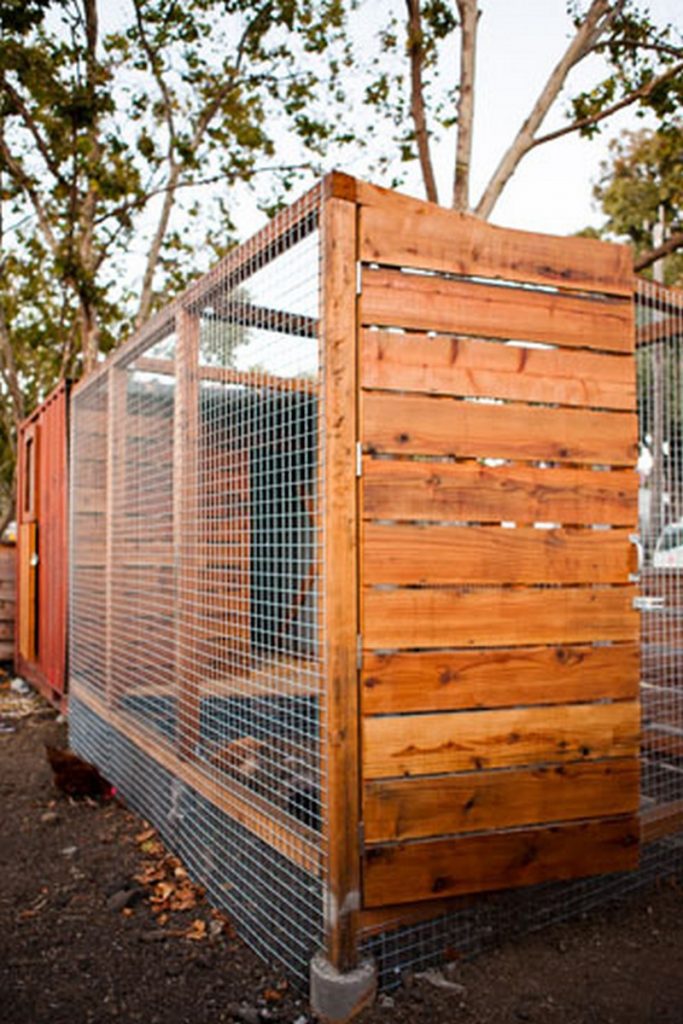
The idea is to add a ramp to the steel container door so your chickens can enter and exit the shipping container chicken coop. You could also build a coop over your shipping container, leaving the door as an accessible entrance.
Make sure you can also easily access your chicken coop if it is over the container if you want to add more space to it. You can build the chicken coop inside the container. You can build platforms, ramps and partitions inside the container to be able to grow more chicken.
Or you can cut the containers in half and build a wire mesh wall with the use of lumbers or steel bars, whatever materials are available.
If you have the skills to work with wire mesh, you can use it to build a barrier that will keep chickens in their chicken coops and the predators out.
Using wire mesh to build a wall is an easy and affordable way to protect your flock. Simply attach mesh wire to the wooden fence using wire mesh clips or nails.
Do you want to try transforming a shipping container into a chicken coop? Which idea do you like most?
Looking to build a chicken coop but don’t want to spend a fortune? Check out our free chicken coop plans here…
Click on any image to start the lightbox display. Use your Esc key to close the lightbox. You can also view the images as a slideshow if you prefer.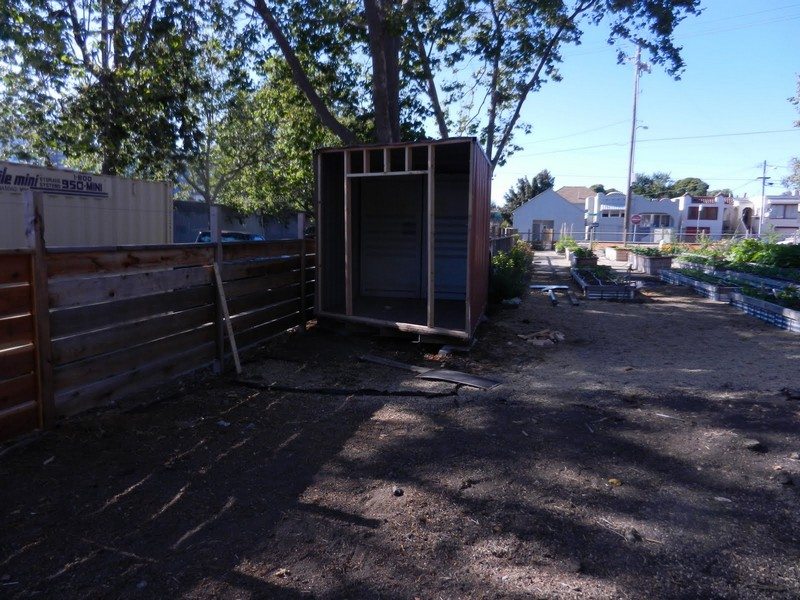
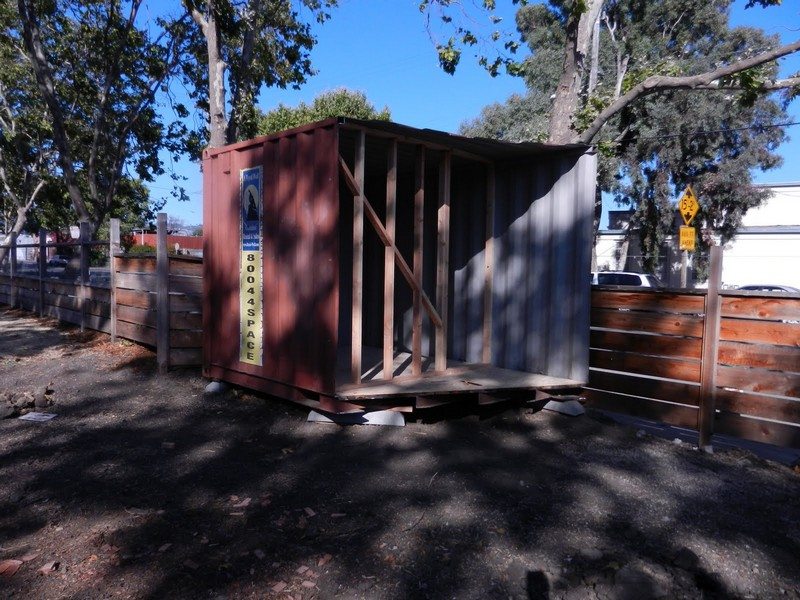
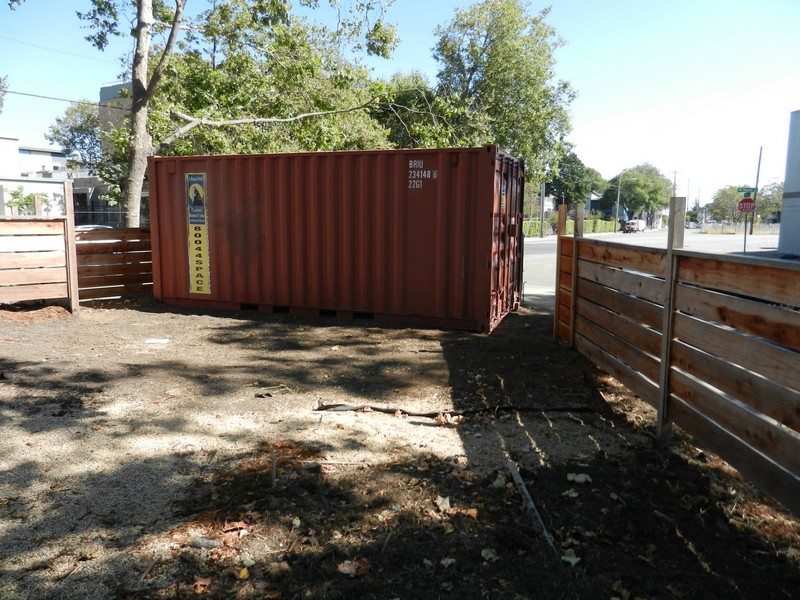
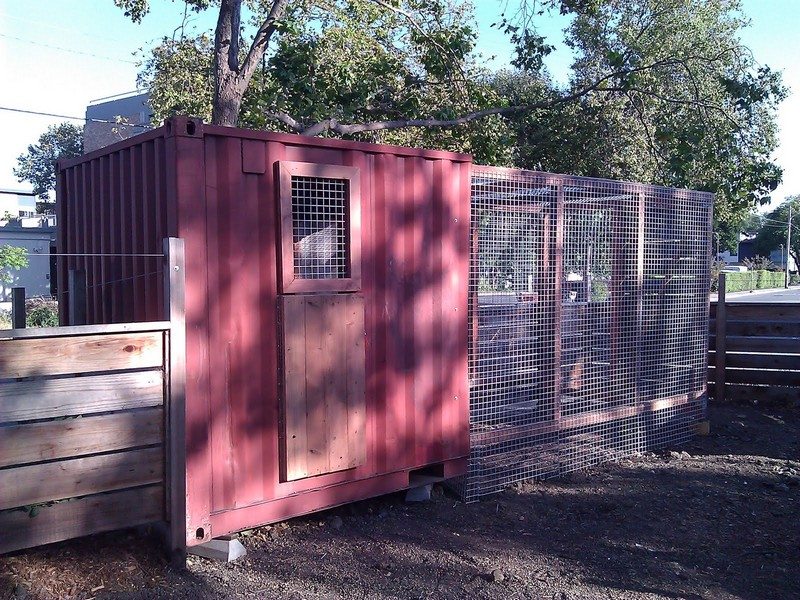
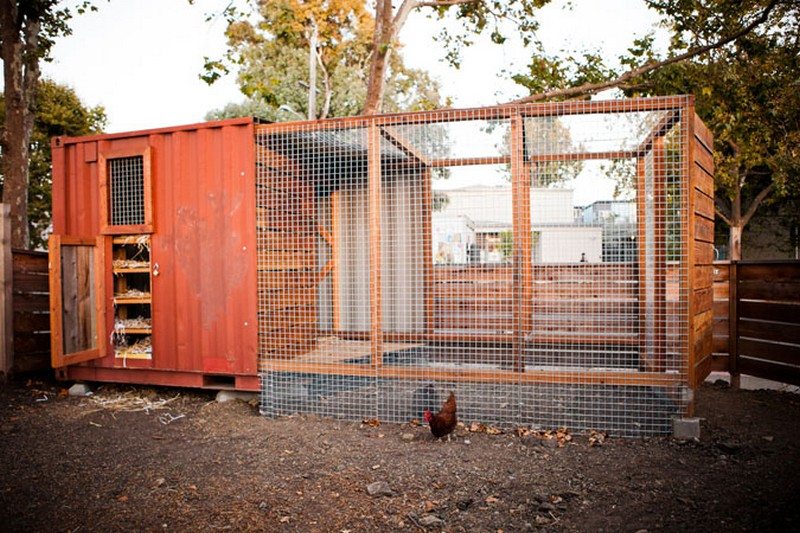

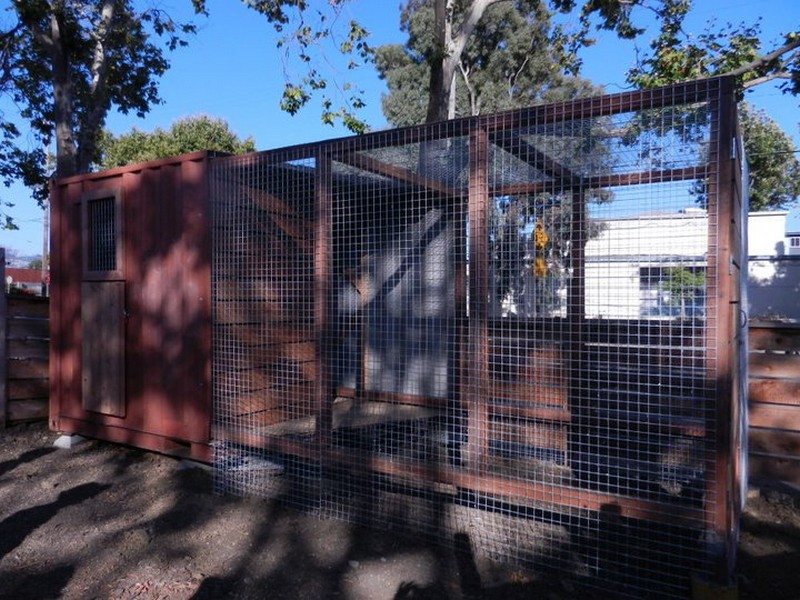
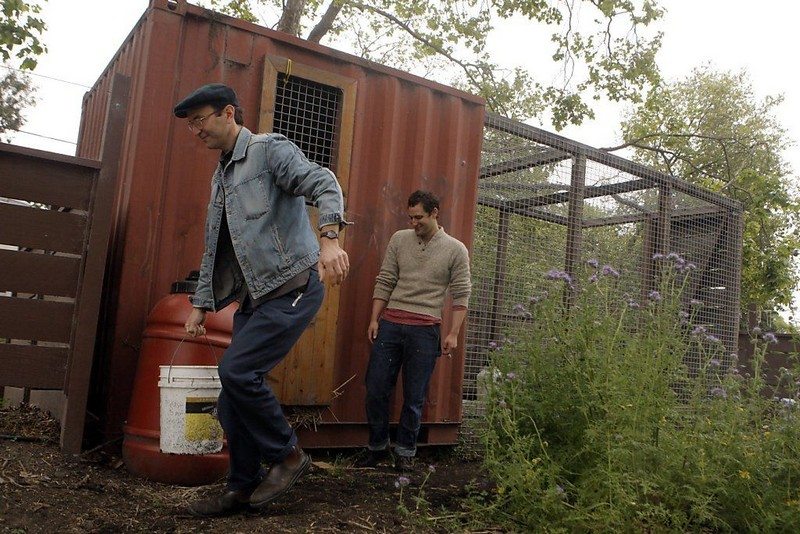
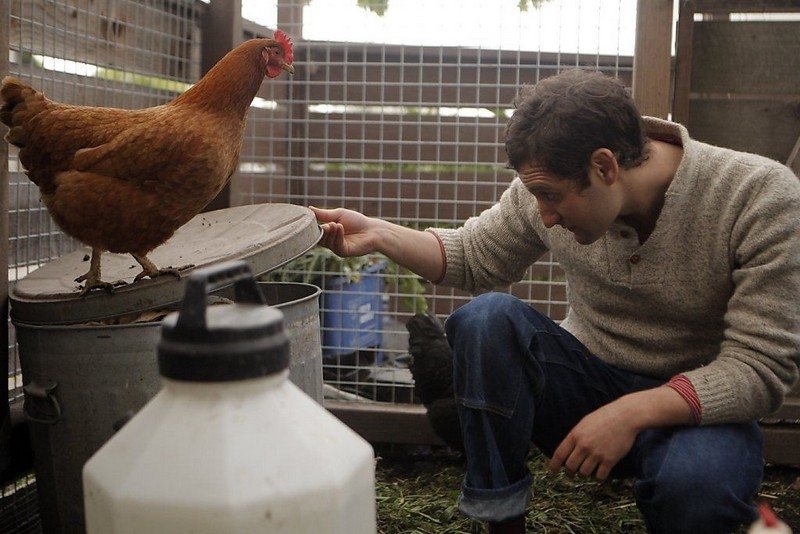


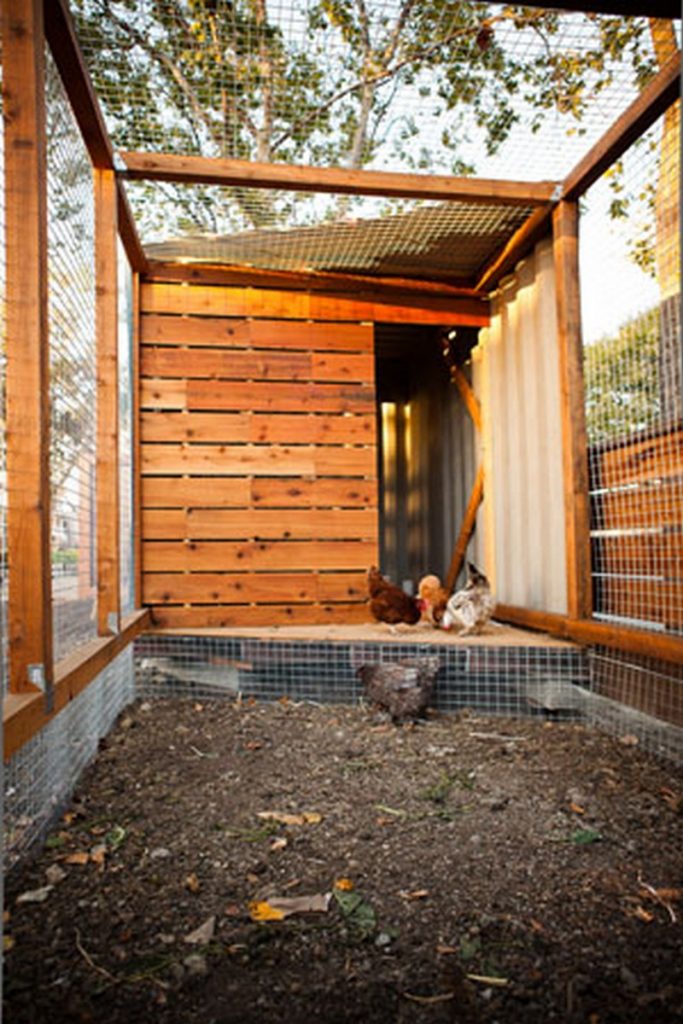

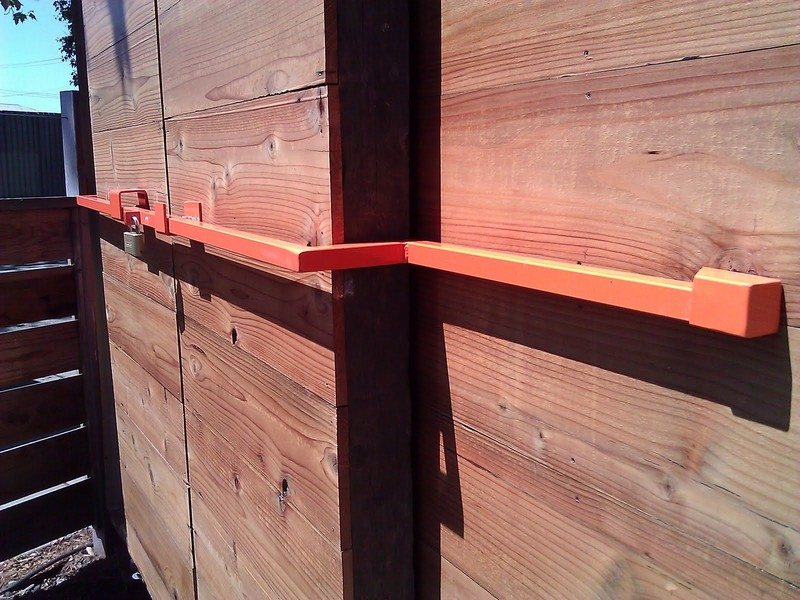
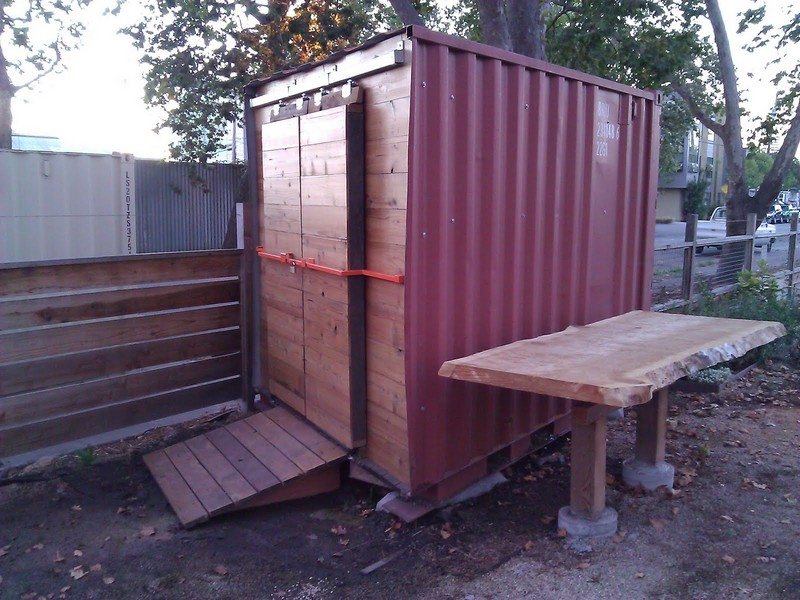
Here’s a tour of another shipping container turned into a chicken coop:
Regulations and Zoning for Chicken Coops
When planning to build a shipping container chicken coop, it’s essential to understand and adhere to local zoning laws and building regulations. These rules can vary significantly from one location to another, affecting everything from the placement of your shipping container chicken coop to its size and the number of chickens you can keep.
Below, we delve into the key regulatory considerations to keep in mind for your shipping container chicken coop.
Understanding Zoning Laws
Zoning laws dictate how land can be used in different areas, which directly impacts where you can place a shipping container chicken coop. Before starting your project, check with your local zoning office to ensure that your property is zoned for agricultural use or permits the keeping of chickens. Some areas may have restrictions on the distance a structure like a shipping container chicken coop must be from property lines or dwellings, which could limit your placement options.
Building Codes and Permits
Building codes are another critical factor when constructing a shipping container chicken coop. These codes ensure that structures are safe and suitable for their intended use. For a shipping container chicken coop, you might need to comply with specific requirements related to structural integrity, ventilation, and access. It’s advisable to obtain the necessary building permits before you begin modifications on your shipping container chicken coop to avoid any legal issues or fines.
Health and Sanitation Regulations
Health and sanitation regulations are designed to protect both human and animal health. For a shipping container chicken coop, these might include how waste is managed, requirements for regular coop cleaning, and ensuring adequate ventilation to prevent respiratory issues for the chickens. Compliance with these regulations not only supports the health of your chickens but also helps in maintaining a good relationship with neighbors and the local community.
Number of Chickens Allowed
Many localities regulate the number of chickens you can keep, which could affect the size and scope of your shipping container chicken coop. Often, the number of allowed chickens is linked to lot size, with larger properties permitted to keep more chickens. Roosters might be prohibited in urban areas due to noise concerns. Understanding these limitations is crucial as you plan your shipping container chicken coop to ensure you do not exceed legal limits.
Environmental Considerations
In some regions, environmental regulations may impact how you can use a shipping container chicken coop. For example, measures might be required to mitigate runoff from the coop or to manage noise and odors that could affect your neighbors. Compliance with environmental regulations not only helps in preserving local ecosystems but also enhances the sustainability of your shipping container chicken coop.
Navigating the regulations and zoning laws is a crucial step in setting up a shipping container chicken coop. It’s important to engage with local authorities early in the planning process to ensure that your shipping container chicken coop meets all legal requirements, ensuring a smooth and successful project. Compliance not only keeps you legally safe but also promotes the welfare of your chickens and the harmony of your community.
Challenges and Solutions When Using Shipping Containers for Chicken Coops
Utilizing a shipping container for a chicken coop presents a unique set of challenges that require careful planning and creative solutions. Although shipping containers offer a robust and potentially cost-effective structure for housing chickens, certain aspects must be addressed to ensure the health and safety of the birds.
Here, we explore common challenges associated with using shipping containers for chicken coops and offer practical solutions to overcome them.
Temperature Control
- Challenge: Shipping containers are primarily made of steel, which is highly conductive and can lead to extreme temperatures inside, both hot and cold, depending on the weather conditions.
- Solution: Insulation is key to moderating the internal temperature of a shipping container chicken coop. Using spray foam, panel insulation, or reflective materials can help maintain a more consistent temperature. Additionally, installing adequate ventilation systems, such as vents or fans, will help circulate air and keep the coop comfortable for the chickens.
Ventilation
- Challenge: Proper air circulation is crucial for maintaining a healthy environment, but shipping containers are naturally airtight, which can lead to poor air quality and humidity build-up.
- Solution: Incorporate multiple ventilation points to ensure fresh air exchange. This can be achieved by adding vent holes or ducts at both ends of the container and ensuring they are protected against predators. Electrical fans can also be used to boost air movement, especially in warmer climates.
Lighting
- Challenge: Shipping containers do not come with natural light sources, which are vital for the health and laying productivity of chickens.
- Solution: Cut windows or install skylights in the shipping container to provide natural light. For added control and to simulate natural daylight cycles, consider installing LED lights with timers.
Space Utilization
- Challenge: While shipping containers provide a large unified space, optimizing this area to accommodate roosts, nesting boxes, and free space can be challenging.
- Solution: Design the interior layout to maximize space and functionality. Install vertical roosts and nesting boxes to leave more floor area for the chickens to roam. Use foldable or multi-use designs where possible to adapt the space as needed.
Predator Protection
- Challenge: Although shipping containers are robust, the modifications made for ventilation and entry points can become vulnerabilities for predator access.
- Solution: Ensure all modifications such as vents, windows, and doors are secured with predator-proof materials like heavy-duty wire mesh or grates. Regularly inspect the coop for any potential breaches or weak points that might be exploited by predators.
Moisture and Condensation
- Challenge: The airtight nature of shipping containers can lead to moisture accumulation inside, particularly if the temperature inside and outside the container varies significantly.
- Solution: Along with proper insulation, install a vapor barrier to prevent condensation. Regularly check for any leaks or water accumulation, particularly around newly installed windows or vents, and ensure there is adequate drainage around the container to prevent standing water.
Using a shipping container as a chicken coop offers a sustainable and innovative solution for poultry housing. However, addressing these challenges with thoughtful design and careful planning is essential to create a safe, comfortable, and productive environment for your chickens. By implementing these solutions, you can harness the full potential of a shipping container to meet your poultry housing needs efficiently.
Conclusion
Using a shipping container as a chicken coop provides a durable, secure housing option that can be both cost-effective and environmentally friendly. With proper modifications for ventilation, insulation, and light, these containers can be transformed into comfortable and productive spaces for chickens. This approach not only recycles unused industrial materials but also offers a creative solution to traditional poultry housing challenges.
If you liked this, you will also like these Shipping Container Homes and Buildings…






